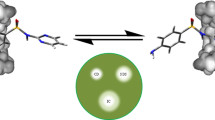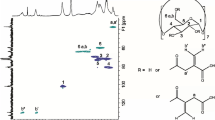Abstract
Cyclodextrins are functional pharmaceutical excipients, which can dynamically include poorly water-soluble drugs and drug candidates resulting in improved solubility, stability and oral bioavailability. A number of formulations containing “natural” and chemically modified cyclodextrins have reached the market and are enjoying widespread attention and use. One such example is itraconazole, a broad-spectrum antifungal agent which is available in an aqueous hydroxypropyl-β-cyclodextrin (HPβCD) vehicle for both oral and parenteral use (Sporanox Oral Solution and Sporanox Intravenous Injection®). While the interaction of itraconazole and HPβCD is well described, its ability to form complexes with other cyclodextrins is less understood. This creates an intriguing opportunity of screening the structural space of available cyclodextrin derivates by assessing their complexation with a single chemical probe, in this case itraconazole. To this end, a number of cyclodextrin derivatives were assess with regard to their ability to improve the water solubility of the test substrate. In some instances, more detail assessments including the effect of pH and the physical form of the drug probe were also completed. The various cyclodextrins solubilized itraconazole to varying extents (micrograms to milligrams) and by varying inclusion mechanisms and stoichiometries.








Similar content being viewed by others
References
De Beule, K., Van Gestel, J.: Pharmacology of itraconazole. Drugs 61(Suppl. 1), 27–33 (2001)
Jain, S., Sehgal, V.: Itraconazole: an effective oral antifungal for onychomychosis. Int. J. Dermatol. 40, 1–5 (2001)
Peeters, J., Neeskens, P., Tollenaere, J.P., Van Remoortere, P., Brewster, M.E.: Characterization of the interaction of 2-hydroxypropyl-β-cyclodextrin with itraconazole at pH 2, 4 and 7. J. Pharm. Sci. 91, 1414–1422 (2002)
Brewster, M.E., Verreck, G., Chun, I., Rosenblatt, J., Mensch, J., Van Dijck, A., Noppe, M., Arien, T., Bruining, M., Peeters, J.: The use of polymer-based electrospun nanofibers containing amorphous drug dispersions in the delivery of poorly water-soluble pharmaceuticals. Die Pharmazie 59, 387–391 (2004)
Gilis, P.A., De Conde, V., Vandecruys, R.: Beads having a core coated with an antifungal and a polymer. Janssen Pharmaceutica US Patent 5633015 (1993)
Strickly, R.G.: Solubilizing excipients in oral and liquid formulations. Pharm. Res. 21, 201–230 (2004)
Davis, M.E., Brewster, M.E.: Cyclodextrin-based pharmaceutics: Past, present, future. Nat Rev Drug Discov 3, 1023–1035 (2004)
Higuchi, T., Connons R.A. In: Reilly, C.N. (ed.) Advances in Analytical Chemistry and Instrumentation, vol. 4, pp. 117–212 Wiley-Interscience, New York (1965)
Higuchi, T., Kristiansen, H.: Binding specificity between small organic solutes in aqueous solution: Classification of some solutes into two groups according to binding tendencies. J. Pharm. Sci. 59, 1601–1608 (1970)
Author information
Authors and Affiliations
Corresponding author
Rights and permissions
About this article
Cite this article
Brewster, M.E., Neeskens, P. & Peeters, J. Solubilization of itraconazole as a function of cyclodextrin structural space. J Incl Phenom Macrocycl Chem 57, 561–566 (2007). https://doi.org/10.1007/s10847-006-9249-0
Received:
Accepted:
Published:
Issue Date:
DOI: https://doi.org/10.1007/s10847-006-9249-0




